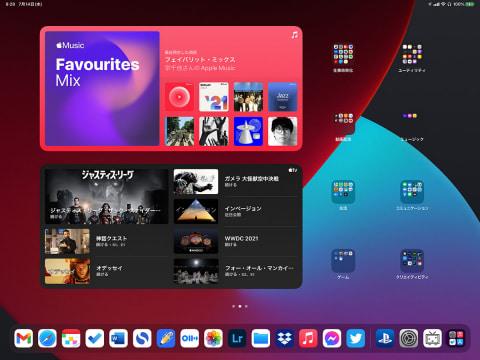
Stereo music is also "spatial audio playback", iOS 15 AV new function check!
Automatically convert stereo sound sources into spatial audio
When it comes to AV-related topics around Apple, I think "spatial audio" is right now. Although it is an improvement accompanying the renewal of Apple Music, assuming the use of AirPods Pro etc., I think it is a very comfortable and enjoyable experience.
The problem with spatial audio is the number of songs, but iOS 15/iPadOS 15 will add a function to compensate for that. That is "spatialization of stereo". As the name suggests, the stereo sound source is processed and pseudo-spatial audio is created.
Notice the icon below the volume. Even though it is a "Stereo" song, there is an item "Spatialize Stereo" in the lower right. If this is blue, it's "on"There are conditions to use this feature. That is "using AirPods Pro or AirPods Max".

These two models have motion sensors, and from iOS 15, they are actively used when playing spatial audio. The key is to recognize the slightest movement of the head and add the shift to the localization of the sound to increase the three-dimensional effect.
"Stereo Spatialization" also uses this element and is not available from other headphones.
When playing Dolby Atmos "spatial audio" music. When playing on Sony's WH-1000XM4, which turns on Spatial Audio when using AirPods Max. Options related to music format type and spatial audio are not displayed. Even YouTube worked. It's not that you can't use it without Apple Music.If you look closely, you can see the "Spotify" icon instead of Apple Music. Identification of the playback application is performed. However, even in this case, "stereo spatialization" is effective. It seems that there are suitable and unsuitable songs depending on the song, and the songs that are originally easy to feel the spatial expansion have a depth that makes you think "Oops", but of course there are songs that are not. The spread is weaker than the songs originally provided by Dolby Atmos, but this certainly works.However, there are times when I think it's unnatural. This is because, as long as the three-dimensional effect is created by tracking the movement of the head, the way the sound is produced changes greatly when the head is shaken. In short, if you suddenly turn to the right or left, the direction from which the sound is heard suddenly changes, and you feel a little uncomfortable. This phenomenon, I get a similar impression when listening to Dolby Atmos songs with AirPods Pro / Max, so it's not a "stereo spatialization" problem, but a side effect of using head tracking.
However, unless you forcefully shake your head, you won't feel any discomfort, so it can't be said to be fatal.
It's an interesting element, but it's no longer the original sound, so of course some people may want to cut it. "Stereo Spatialization" can be turned on and off by pressing and holding the volume bar of the "Control Center" that appears by pulling down from the top right of the screen. The screenshot above is from there.
It should be noted that "from which application in which format" is also displayed here. This is also a handy feature.
